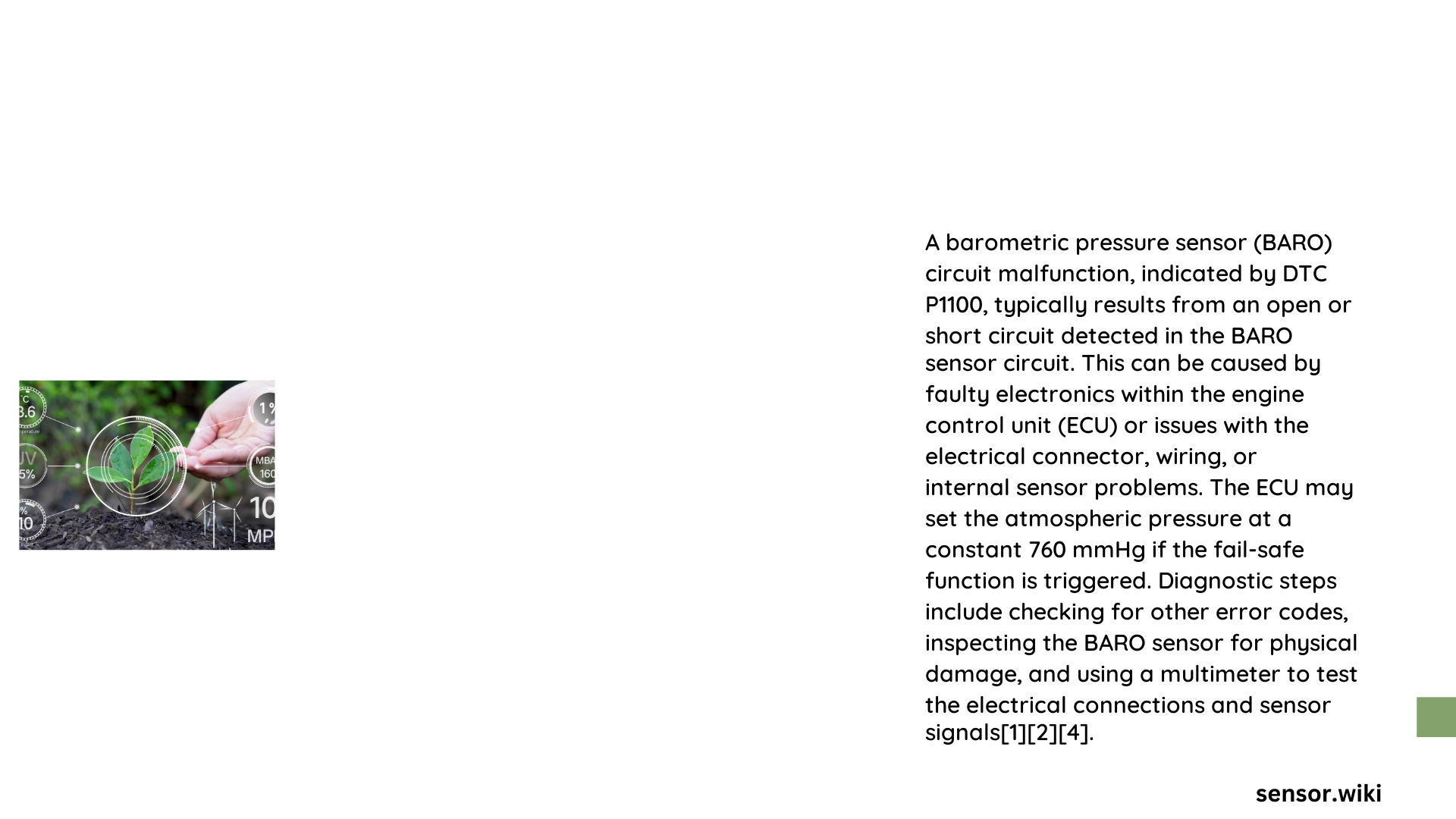A baro sensor circuit malfunction represents a critical automotive diagnostic challenge that can significantly impact engine performance, fuel efficiency, and overall vehicle operation. When this sophisticated sensor fails, it disrupts the engine control unit’s ability to accurately measure atmospheric pressure, leading to potential performance degradation, unpredictable fuel management, and potential long-term engine damage if left unaddressed.
What Causes Baro Sensor Circuit Malfunction?
Root Causes of Sensor Failure
Baro sensor circuit malfunctions typically emerge from several interconnected factors:
- Electrical Issues
- Damaged wiring harness
- Corroded electrical connections
- Short circuits
-
Voltage irregularities
-
Physical Sensor Damage
- Exposure to extreme temperatures
- Mechanical vibration
- Contamination from dirt or debris
-
Manufacturing defects
-
Environmental Factors
- High humidity environments
- Extreme temperature fluctuations
- Prolonged exposure to engine heat
How to Diagnose Baro Sensor Circuit Problems?

Diagnostic Procedure Breakdown
| Diagnostic Step | Procedure | Tools Required |
|---|---|---|
| Initial Scan | Check OBD-II error codes | OBD-II Scanner |
| Visual Inspection | Examine sensor and wiring | Multimeter, Flashlight |
| Electrical Testing | Measure voltage and resistance | Digital Multimeter |
| Performance Verification | Compare sensor readings | Diagnostic Software |
Specific Error Code Analysis
Common Error Codes
- P1100: Toyota-specific circuit malfunction
- P2227: Barometric pressure sensor range/performance issue
- P0106: MAP/Barometric pressure circuit problem
What Are the Symptoms of Baro Sensor Circuit Malfunction?
Performance Indicators
Drivers might experience:
– Reduced engine power
– Inconsistent acceleration
– Poor fuel economy
– Rough idle
– Unexpected engine stalling
– Check engine light activation
How Much Does Repair Cost?
Estimated Repair Expenses
Repair costs can vary significantly:
– Diagnostic Scan: $50 – $150
– Sensor Replacement: $100 – $300
– Wiring Repair: $75 – $250
– Complex ECU Issues: $500 – $1,500
Professional Recommendations
Expert Troubleshooting Tips
- Always use manufacturer-recommended diagnostic tools
- Verify sensor specifications before replacement
- Check related systems like MAP and MAF sensors
- Perform comprehensive electrical system evaluation
- Consider professional diagnosis for complex issues
Prevention Strategies
Maintenance Best Practices
- Regular sensor cleaning
- Protect wiring from heat and moisture
- Annual electrical system inspection
- Use high-quality replacement components
- Follow manufacturer’s maintenance schedule
Technical Specifications
Sensor Performance Parameters
- Typical Voltage Range: 0.5 – 4.5 volts
- Acceptable Pressure Reading: 14.5 – 15.0 PSI
- Operating Temperature: -40°F to 257°F
When to Seek Professional Help?
Expert Intervention Indicators
- Persistent error codes
- Multiple sensor-related issues
- Complex electrical system problems
- Limited diagnostic equipment access
Conclusion
Understanding and addressing baro sensor circuit malfunction requires systematic diagnostic approach, technical knowledge, and precision. While some issues can be resolved through basic troubleshooting, complex problems demand professional expertise.
